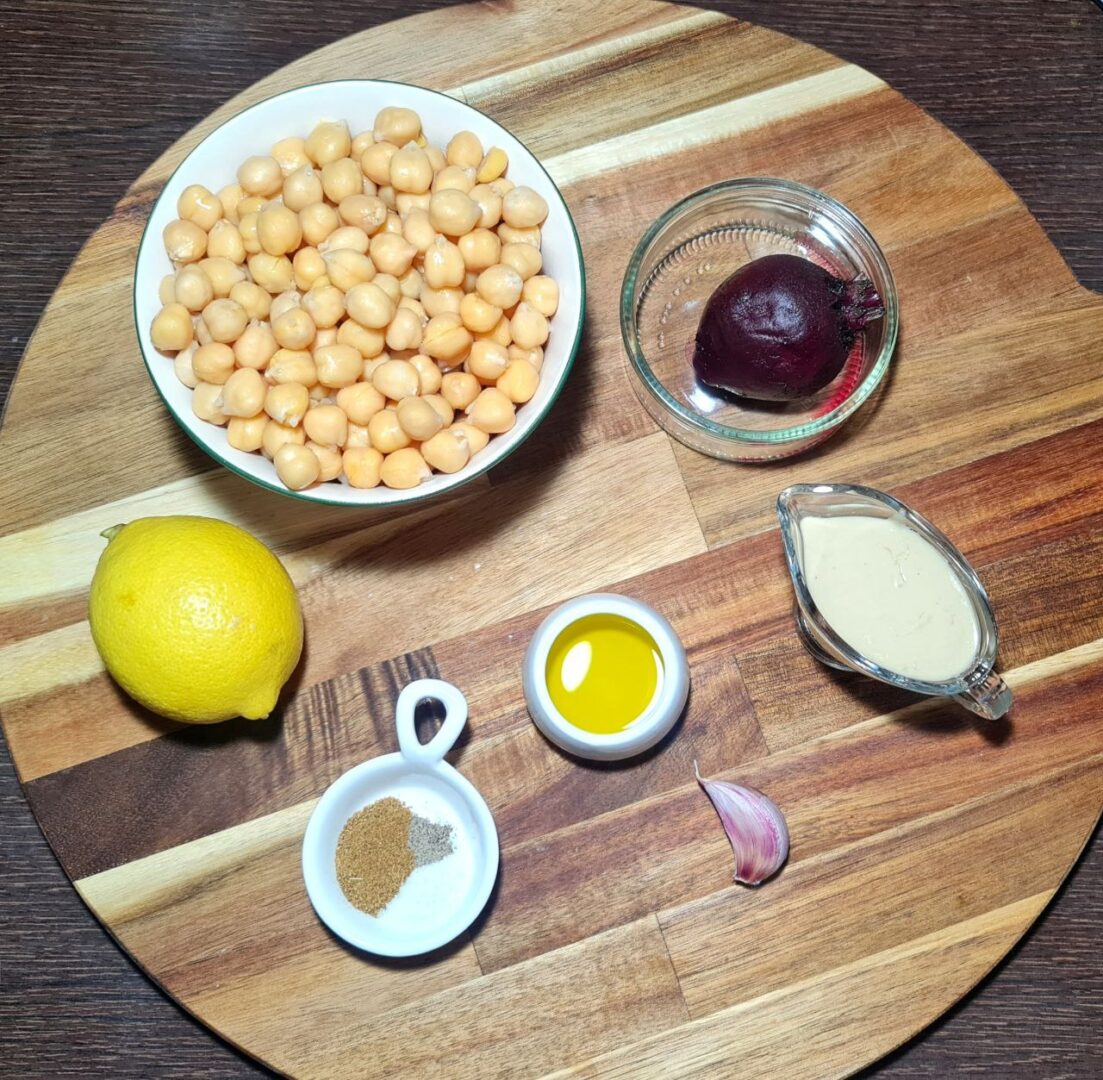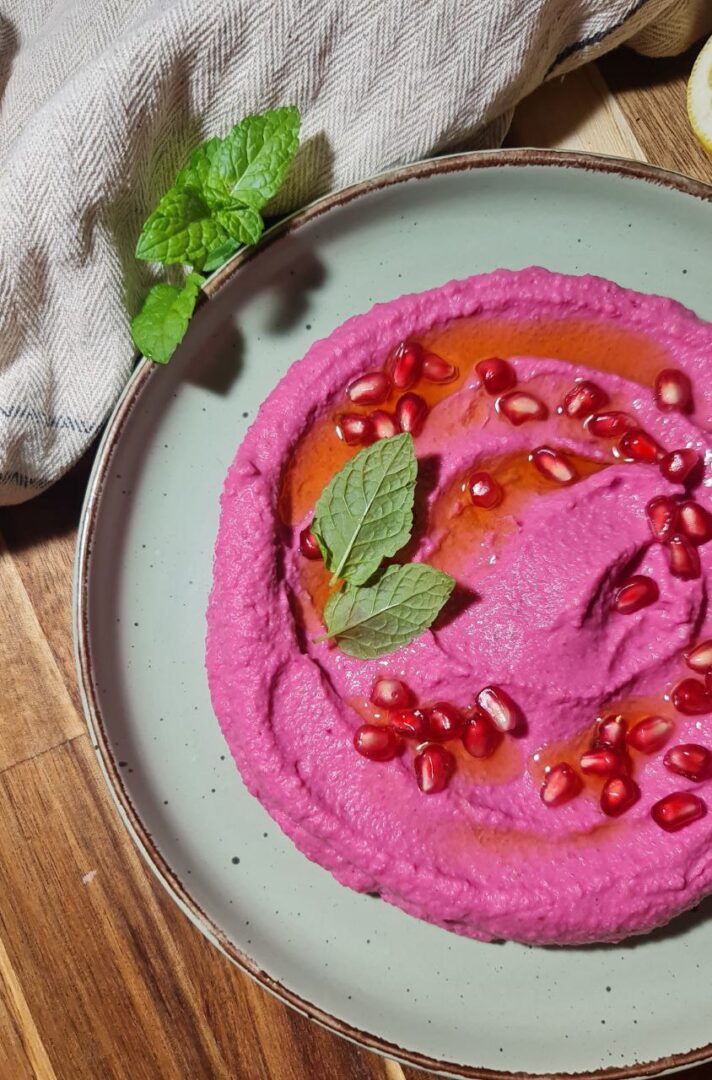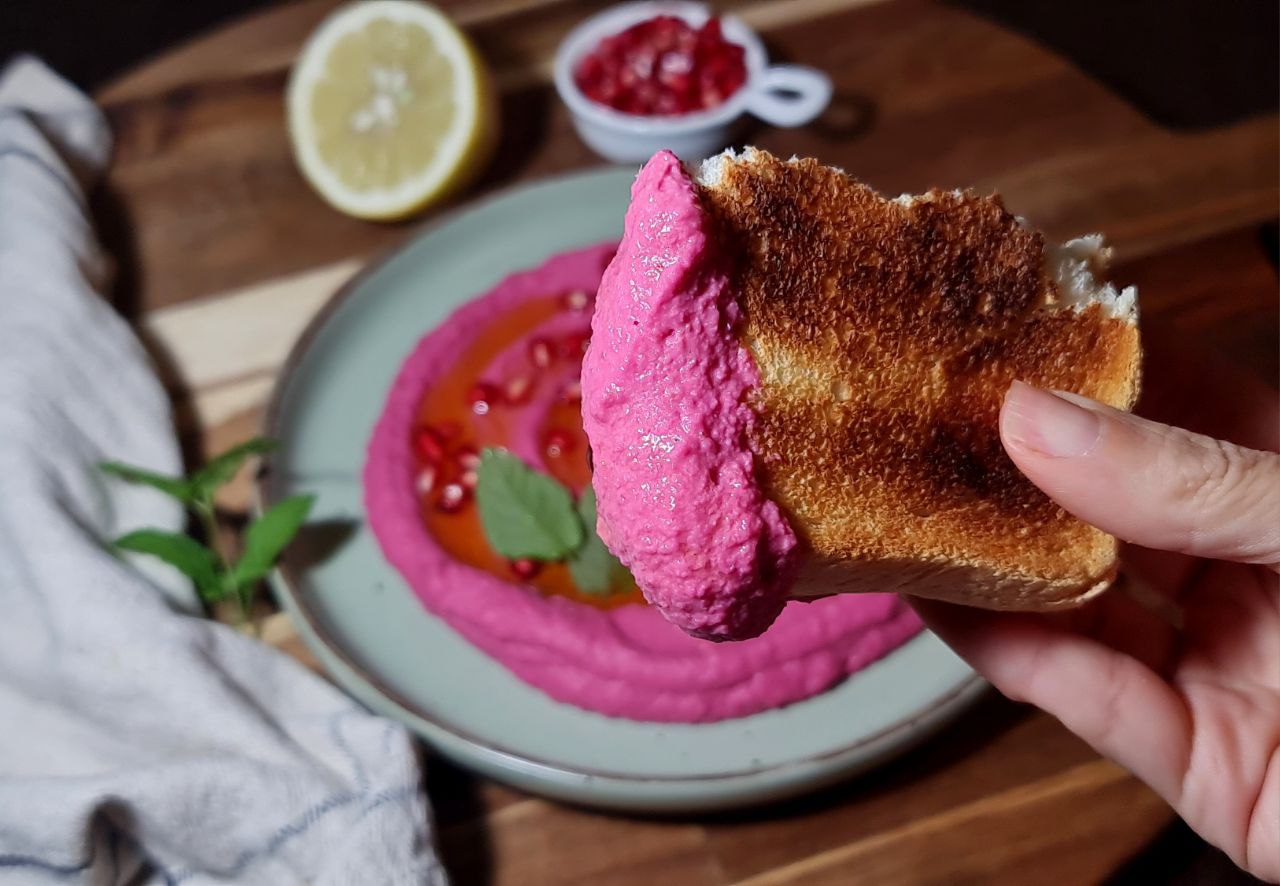Beetroot hummus is not only a feast for the taste buds but also a visual delight. Its vibrant magenta hue instantly grabs attention, making it a stunning addition to any table. This variation of traditional hummus brings together the earthiness of beets with the creamy, rich flavors of chickpeas, tahini, and garlic, creating a nutritious and delicious spread. Whether you’re looking for a healthy snack, a party dip, or a flavorful sandwich spread, beetroot hummus is a versatile and vegan-friendly choice.
In this blog post, we’ll dive into everything you need to know to make the best beetroot hummus recipe from scratch. From ingredient notes to serving suggestions, we’ll cover it all. Plus, you’ll discover why this hummus is the perfect addition to your repertoire of plant-based recipes!
Why You Will Love Our Beetroot Hummus Recipe
- Beautiful and Vibrant Color: The standout feature of beetroot hummus is its striking color. The rich pinkish-red shade adds a pop of color to any meal, making it ideal for gatherings or Instagram-worthy shots.
- Nutrient-Dense: Beetroots are packed with essential nutrients like fiber, folate (vitamin B9), manganese, potassium, iron, and vitamin C. Combined with chickpeas, which are a great source of plant-based protein and fiber, this hummus becomes a wholesome and filling snack or meal accompaniment.
- Earthy and Sweet Flavor: The earthy sweetness of beets complements the nutty and slightly tangy flavor of tahini and lemon. The result is a balanced, well-rounded hummus that offers a different taste profile than the classic version.
- Easy to Make: With just a handful of simple ingredients and a food processor, you can whip up a batch of beetroot hummus in no time. It’s perfect for those busy days when you want something healthy but don’t have hours to spend in the kitchen.
- Naturally Vegan and Gluten-Free: Beetroot hummus is 100% plant-based, making it suitable for vegans, vegetarians, and anyone with gluten sensitivities. It’s also soy-free and nut-free, depending on your tahini choice.
Ingredient Notes

- Beetroot: The star of this recipe, beetroot adds both color and flavor. You can use fresh or pre-cooked beets. Roasting beets enhances their natural sweetness, while boiling is a quicker option. Be sure to allow the beets to cool before blending, especially if you’re using a high-speed blender or food processor.
- Chickpeas (Garbanzo Beans): Chickpeas provide the classic hummus texture and contribute to the overall creaminess. You can use canned chickpeas for convenience, or cook them yourself from dried chickpeas if you prefer a more authentic flavor.
- Tahini: Tahini is a paste made from ground sesame seeds, and it’s a key ingredient in most hummus recipes. It adds a nutty flavor and creamy texture. Look for good-quality tahini made from 100% sesame seeds without added oils or preservatives for the best flavor.
- Garlic: Fresh garlic adds a savory punch to the hummus. Feel free to adjust the amount based on your preference—some like it with a strong garlic flavor, while others may prefer just a hint.
- Lemon Juice: Lemon juice balances the richness of the tahini and the sweetness of the beets with a refreshing tang. Freshly squeezed lemon juice works best here, as it has a brighter, fresher flavor than bottled.
- Olive Oil: A little olive oil adds a smooth and luxurious texture to the hummus. You can also drizzle some extra oil on top before serving for a finishing touch.
- Ground Cumin: Cumin gives the hummus a subtle warm spice, which pairs wonderfully with the earthy beet flavor. You can also experiment with adding smoked paprika or even a dash of chili powder if you like your hummus with a kick.
Tips for Making the Best Beetroot Hummus Recipe
- Roast Your Beets for Maximum Flavor: While you can boil beets for a quicker option, roasting them really brings out their natural sweetness and deepens their flavor. If you have the time, roast your beets wrapped in foil at 200°C (400°F) for 40–50 minutes until tender.
- Adjust the Consistency: Depending on how thick or creamy you like your hummus, you can add more or less water or olive oil. Start with a couple of tablespoons and add more as needed to achieve the texture you prefer. For a smoother texture, you can peel the chickpeas, though it’s not necessary.
- Balance the Flavors: Hummus is all about balance—too much garlic can overpower the sweetness of the beet, while too little tahini can leave it tasting flat. Taste as you go and adjust the lemon juice, garlic, and salt to suit your taste buds.
- Chill Before Serving: Beetroot hummus tastes even better after a few hours in the fridge. This allows the flavors to meld together, so try to make it in advance if you can.
- Experiment with Garnishes: A sprinkle of sesame seeds, fresh herbs like parsley or dill, or even a dusting of paprika can elevate your beetroot hummus presentation. Drizzle with olive oil for a final flourish.

Vegan Serving Suggestions and Pairings
Beetroot hummus is incredibly versatile and can be enjoyed in various ways. Here are some vegan-friendly serving suggestions and pairings:
- As a Dip: Serve beetroot hummus with an array of raw vegetables like carrot sticks, cucumber slices, bell pepper strips, or cherry tomatoes for a healthy and vibrant snack.
- With Pita or Flatbread: Pair it with warm pita bread, flatbreads, or crackers for a satisfying appetizer or side dish. You can also toast pita chips for a crunchy contrast.
- In Sandwiches or Wraps: Spread beetroot hummus on sandwiches or wraps as a flavorful base. It pairs particularly well with grilled veggies, avocado, and leafy greens.
- On Salads or Grain Bowls: Add a dollop of beetroot hummus to salads or grain bowls for extra creaminess and flavor. It’s perfect alongside quinoa, roasted sweet potatoes, and fresh greens.
- As a Toast Topper: Use beetroot hummus as a base for toast, and layer it with avocado, cherry tomatoes, or sprouts for a filling breakfast or lunch.
Storage Tips
- Refrigeration: Store beetroot hummus in an airtight container in the refrigerator for up to 4–5 days. Stir before serving, as it may thicken slightly when chilled.
- Freezing: You can freeze beetroot hummus for up to 3 months in a freezer-safe container. Thaw it in the refrigerator overnight and give it a good stir before serving. You may need to add a little water or olive oil to revive the texture after freezing.
Frequently Asked Questions about Beetroot Hummus Recipe
1. Can I use pre-cooked beets?
Yes! If you’re short on time, you can use store-bought pre-cooked or vacuum-sealed beets. Just make sure they are unsweetened and unseasoned.
2. Can I make this without tahini?
Yes, you can substitute tahini with other ingredients like sunflower seed butter or cashew butter. However, the flavor and texture will differ slightly.
3. Is beetroot hummus healthy?
Absolutely! Beetroot is loaded with nutrients, and chickpeas offer protein and fiber, making this hummus a healthy and nutrient-dense choice.
4. How can I make my hummus creamier?
To make your beetroot hummus creamier, you can add more tahini, olive oil, or cold water while blending. Peeling the chickpeas can also help achieve a smoother texture.

Essential Equipment You Will Need
- Food Processor or High-Speed Blender: A good-quality food processor is essential for creating a smooth and creamy hummus.
- Measuring Spoons: To accurately measure out your tahini, lemon juice, olive oil, and spices.
- Knife and Cutting Board: For chopping your beetroot and garlic.
- Baking Sheet (if roasting beets): If you choose to roast the beetroot, you’ll need a baking sheet and some foil for wrapping.
- Airtight Containers: For storing any leftover hummus.
Beetroot hummus is a wonderful way to add both color and flavor to your meals. Whether you’re hosting a party or just looking for a healthy snack, this hummus will impress with its vibrant appearance and rich taste. It’s not only easy to make but also versatile, serving as a dip, spread, or even a salad topper.
If you’ve never made beetroot hummus before, now is the perfect time to try it. Enjoy this delightful recipe with your favorite vegan dishes, and feel free to experiment with the ingredients to make it your own!


Beetroot Hummus Recipe
This beetroot hummus recipe combines the earthy sweetness of roasted beets with creamy chickpeas, tahini, and garlic. It’s a healthy, flavorful, and vegan-friendly dip or spread that’s easy to make and perfect for any occasion.
Ingredients
- 1 medium-sized beetroot (about 200g), roasted or boiled
- 1 can (400g) chickpeas, drained and rinsed
- 2 tablespoons tahini
- 2 tablespoons lemon juice
- 1 garlic clove, minced
- 2 tablespoons olive oil
- 1 teaspoon ground cumin
- Salt and pepper, to taste
- 2–3 tablespoons cold water (optional, for thinning)
- Fresh mint and pomegranate seeds (optional, for garnish)
Instructions
- Prepare the beetroot: If roasting, preheat the oven to 200°C (400°F). Wrap the beetroot in foil and roast for 40–50 minutes until tender. If boiling, peel the beetroot and boil for 30–40 minutes until soft. Let it cool and then peel if roasted.
- Blend ingredients: In a food processor, add the roasted or boiled beetroot, chickpeas, tahini, lemon juice, garlic, olive oil, cumin, salt, and pepper. Blend until smooth.
- Adjust consistency: If the hummus is too thick, add 1 tablespoon of cold water at a time and blend until you reach the desired consistency.
- Taste and adjust: Taste and adjust seasonings as needed, adding more salt, lemon juice, or garlic if desired.
- Serve: Transfer to a serving dish and garnish with fresh mint or pomegranate. Drizzle with extra olive oil for added richness.
- Enjoy: Serve with pita bread, crackers, veggie sticks, or use as a spread in sandwiches.
Notes
- For extra creaminess, you can peel the chickpeas before blending.
- If you want a bit of spice, add a pinch of cayenne or smoked paprika while blending.
- If you're using pre-cooked beets, the total time will be reduced to around 10 minutes.
CHECK OUT OUR DIP RECIPES:


